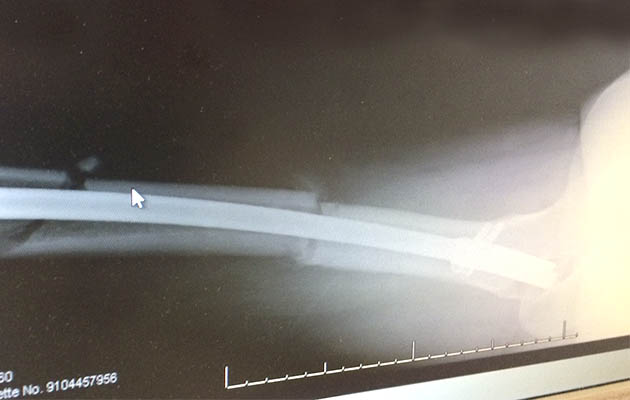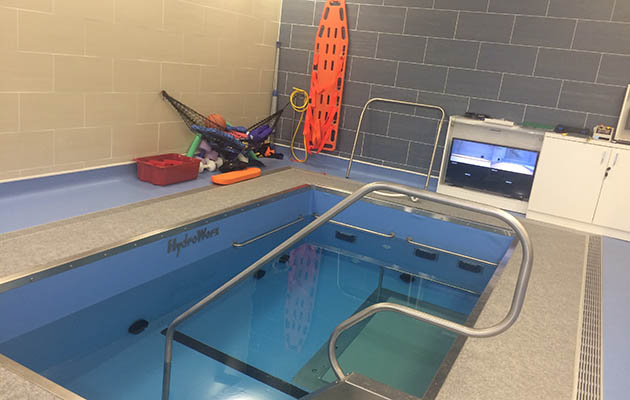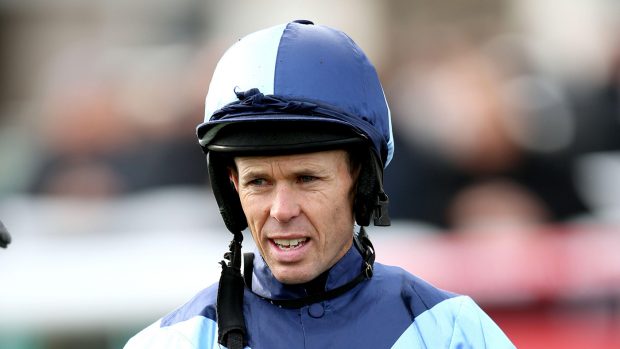Having gone for 28 years without breaking a bone in my body, my time came on a freezing February morning this year while riding out racehorses.
I had previously wondered whether you know straight away when you break a bone and I can now confirm YES you absolutely do know — the pain was excruciating (thank god for morphine).

I can also confirm (having now tested it out) that falling from a horse onto sheer ice is not to be recommended and can result in a broken femur (thigh bone) in two places.
After being pinned back together and sporting a pair of crutches, the rehabilitation began and now, over two months later, I am seeing the light at the end of the tunnel.

And the main reason for this surge of positivity, is because I have been one of the many fortunate riders, jockeys and sportspeople to benefit from the incredible rehabilitation centre that is the Injured Jockeys Fund’s Oaksey House in Lambourn.
This place is like no other that I’ve come across; you have access to brilliant facilities — now boosted thanks to the addition of a hydrotherapy pool — and a top-class team of physiotherapists and conditioning coaches.
The racing industry and the wider equestrian community are so lucky to have Oaksey House available to them. So much so, even other sports, such as rugby, are sending their athletes for rehabilitation at Oaksey House.
Because I hold a point-to-point jockey license, I had free access to all the treatments/gym sessions and just had to pay a small fee for the accommodation — staying in one of their lovely self-catered flats.
I enjoyed four days of intense rehabilitation at Oaksey House, which included three sessions a day varying from physiotherapy to hydrotherapy and gym sessions. I say “enjoyed” because it was so amazing to get back doing exercise, regain focus and kick start my goal to get back walking without crutches or a limp.
Most of my sessions were in the gym and the hydrotherapy pool with strength and conditioning coach Gavin Egan. I’d say he had his work cut out with me, and he certainly worked me hard. However, if you’d told me on day one that, by the end of the week, I’d be standing on just my broken leg throwing and catching a ball, I would have laughed — he worked miracles.
In the gym
Having effectively been inactive for two months, Gavin firstly explained that my muscles basically needed reactivating — especially my core muscles and my “glutes”. He also wanted to get me off the crutches and get me back walking without a limp.
The loss of strength in my knee was also an issue and contributed to my limp. Gavin introduced a resistance band (placed just above my knees) to stop my knees falling inwards during the lower body strength exercises, such as squats and bridges.
To get my glutes back in action, Gavin had me doing lots of lower body exercises and leg lifting in the gym (pictured, below) which involved contracting (squeezing as hard as I could!) my glutes.
Some of the exercises caused, not pain, but a weird feeling in my leg — a bit like an elastic band being pulled. Gavin explained this was the iliotibial band (IT band) being stretched. The IT band runs from the knee to the hip joint and provides attachment for the glutes and “thigh muscle” for hip abduction, also providing stability to the knee. He added that this was probably cut through during surgery (eurghhh).
I also did a lot of work on the TRX suspension trainer and by the end of the week I was doing step ups on only my broken leg, having started off as wobbly as jelly.
After each gym session, I was hooked up to the Game Ready ice machine, which was pretty cool. It wraps around the leg, while the control unit it’s connected to continuously circulates cold water through the wrap and pneumatically applies compression.

The hydrotherapy pool
This recent addition to Oaksey House is remarkable — a specially heated pool (pictured, below) with not only a treadmill in it, but jets and underwater cameras, so you can analyse the range of movement and for me, in particular, my gait in walking on the screens in front of you.
Going in the hydrotherapy pool meant I could achieve a variety of exercises that I would struggle with out of the water, because the water makes it non-weight bearing and reduces the pressure on my joints and broken leg.
Gavin had me walking both forward, backwards and sideways while also throwing a ball at me (lucky I did a bit of netball at school…) and with weights around my ankles. It took some multitasking to think about two things at once — catching the ball while trying not to come off the end of the moving treadmill.
Among other exercises, I did some squatting, jumping, static swimming against the jet streams and some balance exercises. It was a great feeling to have that range of movement back again and I can’t recommend hydrotherapy highly enough.

Before the hydrotherapy pool was built at Oaksey House, the Alter G anti-gravity treadmill (pictured, below) was the go-to machine for non-weight bearing rehabilitation, it is an awesome piece of kit and still used a lot there.
It’s impressive technology works by reducing the bodyweight. Once zipped in, it fills with air below the waist, effectively lifting you slightly off your feet, and allows you to do exercise with decreased bodyweight. For me, it was so nice to walk without a limp and I was able to focus on my stride pattern.

Physiotherapy
During my stay, I also had physiotherapy from both Emma Edwards and Heidi Preece, which usually started with a soft tissue massage because the muscles in my leg were so tight and there was tightness in my hip and knee joints too.
We also ran through strengthening exercises that involved using a resistance band.
I was also introduced to “electrotherapy” which is when electric energy is used to mimic the nerve impulses that cause muscles to contract — the electrodes taking the place of the nerves that normally cause the muscles to move. The electrode “pads” were put on my leg which was the weirdest sensation, especially when your leg is moving without you doing anything.
The muscles are exercising independently, in turn increasing strength in my leg and improving the healing process, helping the muscles recover faster.

(Left) the electrotherapy and (right) the Game Ready ice machine
I am due back at Oaksey House at the end of May for further rehabilitation and Gavin has promised he’ll have me running out of the door…
On a final note, I cannot give enough credit to the whole team at Oaksey House, the work they do is brilliant and I found staying there an eye-opening experience — I met people with much worse injuries than mine and it certainly put everything in perspective.
For all the latest news analysis, competition reports, interviews, features and much more, don’t miss Horse & Hound magazine, on sale every Thursday





